How to sign up with Clotouch POS App
Clotouch POS is a Point of Sale software that enables users to create anf manage their shops online. Clotouch can be used in diverse industries to keep of products, stock and even empolyees.
Recent Posts
- Learn 10 Powerful Restaurant POS Features to Boost Your Daily Operationsby Aman Raj
- Learn 10 Powerful Restaurant POS Features to Boost Your Daily Operationsby Aman Raj
- Master 5 Key Strategies to Optimize Restaurant Operations with POS Softwareby Aman Raj
- Master 5 Key Strategies to Optimize Restaurant Operations with POS Softwareby Aman Raj
- Master Your Sales 7 Essential POS Billing Software for Chennaiby Aman Raj
- Master Your Sales 7 Essential POS Billing Software for Chennaiby Aman Raj
- Master Key Restaurant POS System Features to Boost Your Operationsby Aman Raj
- Master 5 Common Restaurant Challenges With Smart POS Solutionsby Aman Raj
- 5 Smart Strategies to Master Your POS System in Chennaiby Aman Raj
- How to Utilize Key POS Features to Boost Your Restaurant’s Efficiencyby Aman Raj
- Learn 10 Essential Features Every Restaurant POS System Must Haveby Aman Raj
- How to Choose the Best Restaurant POS Software for Your Businessby Aman Raj
- Unlock 8 Practical Strategies to Maximize Your Restaurant POS Softwareby Aman Raj
- The Ultimate Guide 8 Key Benefits of Modern Restaurant POS Softwareby Aman Raj
- Learn How to Choose the Best POS Software for Your Restaurant Businessby Aman Raj
- 10 Essential POS Features Your Restaurant Needs to Master Operationsby Aman Raj
- How to Choose Essential Restaurant POS Features for Your Business Successby Aman Raj
- 10 Essential Restaurant POS Features Every Owner Needs to Masterby Aman Raj
- Discover How to Optimize Your Restaurant with Essential POS System Featuresby Aman Raj
- 5 Practical Tips to Master Your Restaurant POS Software Quicklyby Aman Raj
- How to Choose the Best Restaurant POS Features for Your Businessby Aman Raj
- Learn 10 Proven Ways to Maximize Your Restaurant POS Software Benefits Nowby Aman Raj
- Master 5 Key Benefits of POS Billing Software for Chennai Storesby Aman Raj
- How to Pick Top POS Software Features to Boost Restaurant Efficiencyby Aman Raj
- Top 7 Retail POS Software Solutions in Chennai to Boost Your Business Growthby Aman Raj
- Master 10 Powerful Strategies to Maximize Restaurant POS Software Benefitsby Aman Raj
- How to Choose Essential POS Features for Your Restaurant Success Guideby Aman Raj
- Discover the 10 Best Restaurant POS Software Solutions for Small Businessesby Aman Raj
- How to Choose the Best Restaurant POS Features for Your Businessby Aman Raj
- 7 Ways Restaurant POS Software Boosts Your Customer Serviceby Aman Raj

How to Pick the Best Restaurant POS System 7 Smart Steps
Choosing the right restaurant POS system can feel overwhelming. This guide, crafted by an expert in restaurant technology, simplifies the process into 7 smart, actionable steps. Learn how to evaluate options, compare features, and select a system that perfectly aligns with your restaurant’s unique operational needs, ensuring a seamless integration and immediate benefits.

10 Essential POS Software Features Every Restaurant Owner Needs to Know
As a restaurant owner, understanding your POS software capabilities is paramount. This post, authored by an industry expert, reveals 10 essential features that can revolutionize your daily operations, from managing orders to tracking inventory, ensuring you make the most of your technology investment and drive business success.

How to Identify Top Features for a Restaurant POS System Guide
Choosing the right Point of Sale (POS) system is critical for any restaurant’s success. This comprehensive guide will walk you through how to identify the top features essential for optimizing your operations, managing inventory, processing payments, and enhancing customer experience. Learn what truly matters when selecting a restaurant POS system to ensure efficiency and profitability.
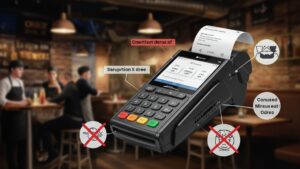
Learn 8 Common Mistakes to Avoid When Using Restaurant POS
Even the best restaurant POS system can lead to headaches if not used correctly. Drawing on extensive experience, this post highlights 8 common mistakes restaurant owners and staff often make. Learn how to identify and avoid these pitfalls, ensuring your POS system truly supports your operations and contributes to a seamless, error-free customer experience.
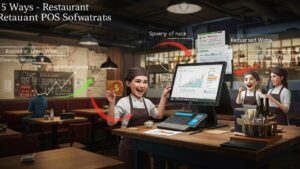
5 Ways Restaurant POS Software Boosts Your Business Efficiency and Profits
Curious how your restaurant POS software can do more than just process orders? This expert-authored post reveals 5 powerful strategies to leverage your system for maximum business efficiency and increased profits. From optimizing staff performance to minimizing waste, discover how smart POS utilization can transform your restaurant’s bottom line.

5 Critical Restaurant POS Mistakes to Avoid for Seamless Operations
Even the best restaurant POS software can lead to issues if not managed correctly. As a strategist, I’ve identified 5 critical mistakes that can disrupt your operations. This post provides actionable insights on what to avoid, ensuring your POS system contributes to seamless service and efficiency, rather than creating unnecessary hurdles for your staff and customers.
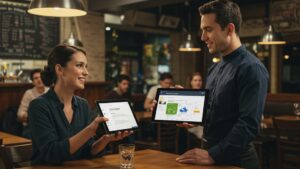
5 Ways Restaurant POS Software Improves Customer Service and Guest Experience
A seamless dining experience is paramount for customer loyalty. This post delves into 5 impactful ways restaurant POS software elevates customer service, from faster order taking to personalized experiences, ultimately leaving guests delighted and eager to return.
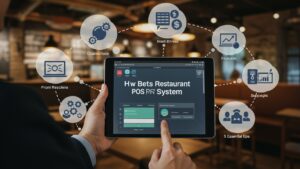
How to Choose the Best Restaurant POS System 5 Essential Tips
Selecting the right restaurant POS system is a pivotal decision for any eatery. As an expert, I’ve distilled the process into 5 essential tips to guide you. This post cuts through the noise, offering practical advice to help you choose the best system that aligns with your operational needs and long-term goals, ensuring a smooth transition and enhanced efficiency.
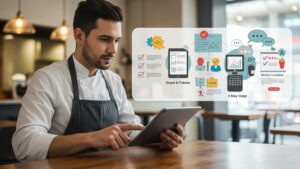
How to Choose the Right Restaurant POS System 5 Key Steps
Navigating the vast market of restaurant POS systems can be daunting. This guide breaks down the process into 5 key steps, empowering you to make an informed decision that aligns with your restaurant’s specific operational needs and long-term goals.

7 Ways Restaurant POS Software Boosts Your Business Profitability Effectively
As a content strategist, I understand the critical role technology plays in business success. This post delves into 7 effective ways restaurant POS software isn’t just a tool, but a powerful asset to significantly boost your business profitability. From inventory management to sales analytics, discover how smart implementation can transform your bottom line.
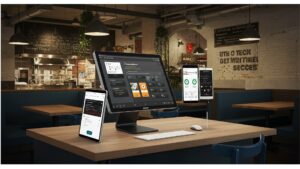
7 Essential Features Your Restaurant POS Software Must Have for Success
Uncover the critical functionalities that differentiate good restaurant POS software from great. This post guides you through 7 essential features your system needs to boost efficiency, enhance customer experience, and ensure lasting success in the competitive restaurant industry.

How to Select Essential Features for Your Restaurant POS System Guide
Navigate the complexities of restaurant technology with our comprehensive guide on how to select essential features for your POS system. This post breaks down the crucial functionalities every restaurant needs, from inventory management to table service, ensuring you make an informed decision that drives efficiency and enhances customer experience. Learn what truly matters when choosing a POS to elevate your restaurant operations.

Discover 8 Powerful Ways Restaurant POS Elevates Customer Experience
In today’s competitive culinary landscape, customer experience is paramount. This expert-driven post reveals 8 powerful ways restaurant POS systems are revolutionizing guest satisfaction. From personalized orders to efficient table management, uncover how smart POS integration can create memorable dining experiences and foster loyal customers.

Learn 8 Common Mistakes Restaurants Make with POS Software and How to Avoid Them
Even the best restaurant POS software can lead to frustrations if not used correctly. This post highlights 8 common mistakes restaurants frequently make and provides actionable advice on how to avoid them, ensuring your system works for you, not against you.
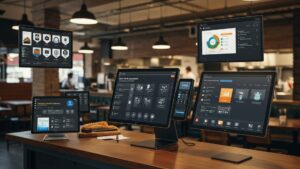
Top 10 Restaurant POS Features That Streamline Your Daily Operations
Efficient daily operations are the backbone of a successful restaurant. This post, crafted by an expert, highlights the top 10 restaurant POS features specifically designed to streamline your daily tasks. From quick order entry to comprehensive reporting, learn how these functionalities can transform your workflow and enhance overall productivity.
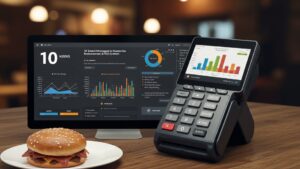
10 Smart Strategies to Maximize Profit with Your Restaurant POS System
Your restaurant POS system is more than just a transaction tool; it’s a powerful engine for profit. This post unveils 10 smart strategies to harness its full potential, from optimizing inventory to enhancing customer loyalty, all designed to boost your bottom line.
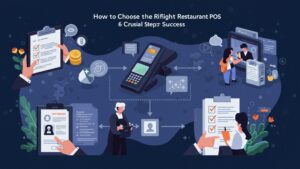
How to Choose the Right Restaurant POS 6 Crucial Steps for Success
Selecting the right restaurant POS system is critical for long-term success. This post outlines 6 crucial, actionable steps to guide you through the decision-making process. From assessing your needs to comparing features and understanding costs, ensure you choose a system that perfectly aligns with your restaurant’s goals and operational demands.

How to Choose the Right Restaurant POS 6 Crucial Steps for Success
Selecting the right restaurant POS system is critical for long-term success. This post outlines 6 crucial, actionable steps to guide you through the decision-making process. From assessing your needs to comparing features and understanding costs, ensure you choose a system that perfectly aligns with your restaurant’s goals and operational demands.

Avoid These 6 Common Mistakes When Implementing New Restaurant POS Software Solutions
Implementing new restaurant POS software is a critical project that can significantly impact your business. This guide highlights 6 common mistakes to avoid during the implementation process, ensuring a smooth transition, minimizing disruptions, and maximizing the benefits of your new technology solutions.

What Are the 7 Best POS Software Solutions for Small Restaurants
Navigating POS options for a small restaurant can be daunting. This post breaks down the 7 best POS software solutions available, focusing on ease of use, affordability, and features crucial for smaller establishments. Find the ideal system to streamline your operations and enhance customer experience without breaking the bank.

What Are the 7 Best POS Software Solutions for Small Restaurants
Navigating POS options for a small restaurant can be daunting. This post breaks down the 7 best POS software solutions available, focusing on ease of use, affordability, and features crucial for smaller establishments. Find the ideal system to streamline your operations and enhance customer experience without breaking the bank.

How to Choose the Right Restaurant POS System 10 Key Steps to Guide You
Choosing the ideal restaurant POS system can be a daunting task, but it’s a critical decision for your business’s future. This comprehensive guide breaks down the process into 10 key steps, empowering you to make an informed choice that perfectly aligns with your restaurant’s unique requirements and goals.

10 Essential Restaurant POS Features Every Owner Needs to Master
Dive into the world of restaurant technology with our guide to 10 essential POS features. This post highlights crucial functionalities every restaurant owner needs to master, from efficient order taking to inventory management, ensuring your business runs smoothly and profitably. Discover how these features can transform your operations.
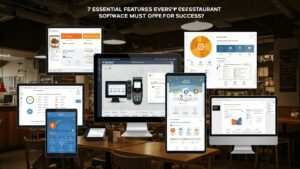
7 Essential Features Every Restaurant POS Software Must Offer for Success
As a restaurant owner, selecting the right POS software is paramount for success. This post delves into the 7 essential features every restaurant POS system must offer, from seamless order management to integrated inventory control, ensuring your operations run smoothly and profitably.

How to Master Essential Restaurant POS Features for Seamless Service
Unlock the full potential of your restaurant’s operations. This comprehensive guide, ‘How to Master Essential Restaurant POS Features for Seamless Service’, dives deep into the functionalities that can transform your business. From efficient order management to streamlined payment processing and insightful reporting, discover practical strategies to leverage your POS system, enhance customer satisfaction, and drive profitability. Learn to navigate crucial features and ensure every service interaction is flawless.

How to Select the Perfect Restaurant POS Learn Key Features for Success
Selecting the right restaurant POS system is crucial for operational efficiency and customer satisfaction. This comprehensive guide will walk you through the essential features you need to consider, from order management and inventory tracking to payment processing and reporting, ensuring you make an informed decision for your business’s long-term success. Learn how to identify the perfect POS solution that aligns with your restaurant’s unique needs and helps streamline daily operations.

The Ultimate Guide 8 Key Benefits of Modern Restaurant POS Software
Unlock the full potential of your restaurant with our ultimate guide to 8 key benefits of modern POS software. This comprehensive post delves into how contemporary systems can revolutionize everything from order management and inventory control to customer relationship management and data analytics, propelling your business forward.

Learn 8 Best Practices for Maximizing Your Restaurant POS System Investment Today
Investing in a restaurant POS system is a significant step, but merely having it isn’t enough. This post guides you through 8 best practices for maximizing your POS system investment, ensuring you harness its full power to enhance service, improve efficiency, and drive greater returns for your restaurant.

Learn 5 Smart Ways Restaurant POS Systems Boost Your Business Profits
Ready to see your restaurant’s bottom line grow? This post explores 5 smart, actionable ways restaurant POS systems can directly boost your business profits. From reducing waste to optimizing staffing and enhancing customer loyalty, learn how modern POS technology is a powerful tool for financial success.
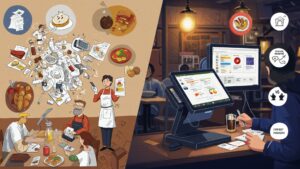
5 Smart Ways Restaurant POS Software Improves Your Daily Operations and Boosts Profit
Running a restaurant involves countless daily tasks, but smart POS software can be your ultimate ally. This article reveals 5 intelligent ways restaurant POS software not only streamlines your daily operations, from order taking to inventory, but also plays a crucial role in boosting your overall profitability.
